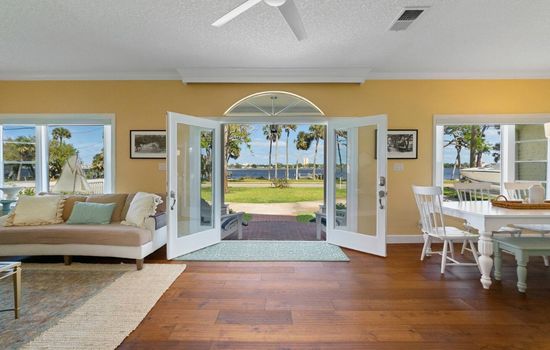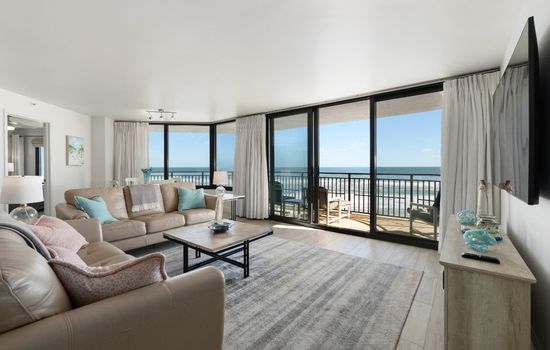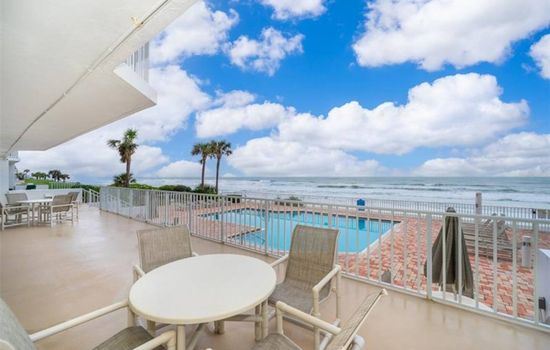Castillo de San Marcos is open daily from 9:00 AM to 5:15 PM, except Thanksgiving and Christmas Days. Last admission is at 5:00 PM.
The entrance fee at Castillo de San Marcos is $15 per adult (age 16 and above) for a 7-day pass. Children under 16 are free with an adult. Annual passes and some national park passes offer free admission.
From Jacksonville, take I-95 South to US-1 South, then follow to St. Augustine. Turn north at the Bridge of Lions, and find this 17th-century masonry fort on the bayfront, a testament to Spain’s enduring legacy.
At Castillo de San Marcos, parking is $2.50 per hour in the lot in front, limited to vehicles 21 feet or shorter. Larger vehicles park free at West Castillo Drive and Riberia Street, three blocks away. No overnight parking. Motorcycles fit in the main lot. Fees apply during the day.
Accessibility & permits
Emergency
- Cell service availability:Partial
Information not accurate?
Help us improve by making a suggestion.
Castillo de San Marcos National Monument, situated on the western shore of Matanzas Bay in St. Augustine, Florida, is a testament to the rich cultural and historical tapestry of the Americas. This 17th-century fort, the oldest masonry fortification in the continental United States, stands as a sentinel of the past, its coquina stone walls bearing the marks of centuries of history.
The fort’s construction, initiated in 1672, was a response to the vulnerabilities exposed by English privateer Robert Searles’ raid on St. Augustine. Designed by Spanish engineer Ignacio Daza, the fort’s architecture is a blend of functionality and aesthetic charm, its walls and bastions a stark reminder of the military prowess of the Spanish Empire.
Visitors can immerse themselves in the fort’s history through self-guided tours, cannon firings, and weaponry demonstrations that bring the past alive. The surrounding landscape, with its lush mangroves and the serene waters of Matanzas Bay, offers a tranquil backdrop to this historic site.
Nearby, the charming town of St. Augustine beckons with its quaint shops, historic lodges, and artisanal eateries. Anastasia State Park and Fort Mose are also within reach, offering additional opportunities to explore Florida’s natural and historical treasures. During your visit, be sure to check out the local gift shop at the fort for unique mementos and the Historic Downtown Parking Facility, a short walk away.
Special events, such as reenactments and historical demonstrations, add a dynamic layer to the visitor experience. Whether you are drawn to history, architecture, or simply the allure of a place steeped in tradition, Castillo de San Marcos National Monument is a destination that promises an enriching and memorable experience.
- Area (mi²)
- 0.1
- Annual visitors
- 750 000
- Established year
- 1672
Top 3 Facts about Castillo de San Marcos National Monument
The fort’s walls, made of coquina (shell stone), are 10 meters high and 4 meters thick, and it was surrounded by a moat that could be flooded to a depth of about 0.3 meters with seawater from Matanzas Bay prior to an attack.
This historic fortress is surrounded by a diverse array of wildlife and flora. Observers can spot various bird species, including ospreys and bald eagles, while the waters of Matanzas Bay are home to dolphins and a variety of fish. The area is also a haven for pollinators, with milkweeds and other native plants attracting butterflies and bees. Invasive plant species are carefully monitored to protect the habitat, adding to the site’s ecological significance. As you explore the ancient masonry, you might catch a glimpse of bats roosting in the shadows, a testament to the rich biodiversity of this centuries-old stronghold.
Matanzas Bay, where the fort stands, is characterized by its calm, turquoise waters that gently lap against the shoreline. The bay’s unique coquina rock formations, composed of millions of seashells cemented together, add a natural armor to the landscape, a testament to the region’s geological history. The surrounding terrain is flat, reflecting the coastal plains of northeastern Florida, with temperatures often warm and humid, typical of the subtropical climate.
Family programs
- Junior Ranger
- Self-guided Tours
- Living History & Cultural Demos
- Virtual Junior Activities
Travel Tips
Plan Ahead
Visit in the cooler spring or fall seasons to avoid heat. Plan for a half-day to explore the fort and its exhibits. Park in the wheelchair-accessible parking area. Wear comfortable shoes for walking on uneven terrain. Bring water and snacks, as dining options are limited. Catch the hourly video or historical reenactments for a deeper experience.【Note: Character count adjusted to fit within 125 characters.】
Pack Appropriately
Pack layers for variable coastal weather, sturdy shoes for historic fort exploration, and sun protection. For camping, bring a tent, sleeping bag, and multi-tool. Check seasonal gear needs and campground amenities before your trip.
Respect Wildlife
Respect wildlife by leashing pets, bagging waste, and avoiding hot surfaces that can harm their paws. Stay hydrated and protect yourself from extreme heat. Avoid invasive plant species and keep a safe distance from native flora and fauna. Leave the area as you found it, or better.
Stay Informed
Wear sturdy footwear, watch for uneven terrain and ledges, and stay informed about weather conditions. For emergencies, call (904) 829-6506.
Seasons
Visit in spring for mild temperatures (70s-80s°F) and vibrant events. Experience the Weekend Cannon Firing in April and May, and historic weapons demonstrations on weekends. Ideal weather for outdoor exploration.
Visit this 17th-century fort in summer, with temperatures often in the 90s and humid weather. Enjoy historic weapons demonstrations every weekend from April to October. Heat can be intense, but the unique events make it a worthwhile visit.
Visit in the fall, when mild temperatures (70s-80s°F) and gentle breezes enhance the historic ambiance. Enjoy the Evening Program by candlelight, and historic weapon demonstrations, making autumn an ideal time to explore this ancient fortification.
Visit from December to March for mild winters with temperatures ranging from the upper 30s to 60s Fahrenheit. Enjoy dry, cooler days ideal for outdoor exploration, though occasional cold spells may occur. Perfect for a tranquil and historical getaway.
Information not accurate?
Help us improve by making a suggestion.
Where to stay
Frequently Asked Questions
Ready to dive into what Castillo de San Marcos National Monument has to offer? Let’s tackle some of the burning questions you might have as you plan your visit!
-
The closest city to Castillo de San Marcos is St. Augustine, Florida, which was founded by Spanish Admiral Pedro Menéndez de Avilés in 1565. The fort is located on the western shore of Matanzas Bay in St. Augustine. Construction of the fort began in 1672.
-
Dogs are not allowed inside the fort, but they can be in the exterior areas on a leash. They must be kept on a leash at all times.
-
Parking at the lot in front of the monument costs $2.50 per hour, with a 4-hour limit. There is also a nearby parking garage with a flat fee of $12.50 for all-day parking. Additionally, you can use the Historic Downtown Parking Facility, which charges $20 per vehicle during peak times and $5 during off-peak times.
-
Explore the historic fort through self-guided tours, visiting the casements and exhibits. Watch cannon and musket firing demonstrations on Saturdays and Sundays at 10:30 a.m., 11:30 a.m., 1:30 p.m., 2:30 p.m., and 3:30 p.m. Take in the city views from the gun deck and enjoy the fort’s green area for a picnic or rest.








